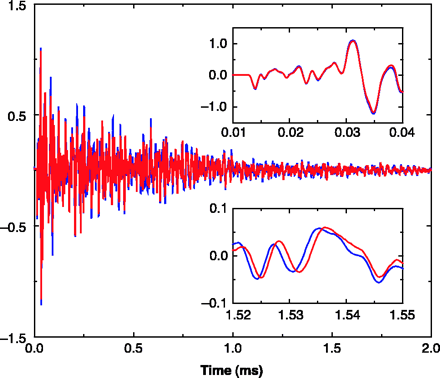First Pan-American/Iberian Meeting on Acoustics, Cancun



[ Lay Language Paper Index | Press Room ]
Hearing a Volcano Change
Roel Snieder- rsnieder@mines.eduAlexandre Gret, Huub Douma, and John Scales
Dept. of Geophysics and Center for Wave Phenomena, Colorado School of Mines
Golden, CO 80401, USA
Popular version of paper 3pPA3
Presented Wednesday afternoon, December 4, 2002
First Pan-American/Iberian Meeting on Acoustics, Cancun, Mexico
In many applications in science and technology one is more interested in detecting the change in a medium than to create an image of the medium. An example of this is volcano monitoring. For those living under a volcano it is more important to know whether a volcano has changed than to know the precise internal structure of the volcano. Another example is the production of oil and gas reservoirs. Once reflection seismology has mapped out the internal structure of a reservoir, one is mostly interested in the change of the reservoir as it produces oil or gas.

We have developed a technique to monitor minute changes in acoustic or elastic media. We illustrate this technique using an experiment where ultrasonic wave propagate through a small granite cylinder. With a heating coil we changed the temparature of the cylinder. The first figure shows the waveforms at a temperature of 45 degrees (blue) and 50 degrees (red), respectively. Both waveforms have a noisy appearance. Yet the waveforms recorded at these two temperatures are reproducible and are very similar. The upper inset shows the first arriving waves, these waves are almost identical. Yet the later arriving waves shown in the bottom inset show distinct changes. We have developed a method to measure the change in the seismic velocity with extreme accuracy from the changes in these late-arriving waves. For this simple-table top experiment, we can measure a change in the seismic velocity as small as 0.1% with an accuracy of 0.02%.
This work was published as: Snieder, R., A. Gret, H. Douma, and J. Scales, Coda wave interferometry for estimating nonlinear behavior in seismic velocity, Science, 295, 2253-2255, 2002.
The technique for monitoring change that we developed has been tested here in a simple laboratory experiment. Potential applications of this technique include monitoring dams, volcanoes, or fault zones, measuring changes in oil and gas reservoirs, determining the properties of turbulent fluids, and detecting the formation of cracks in materials.